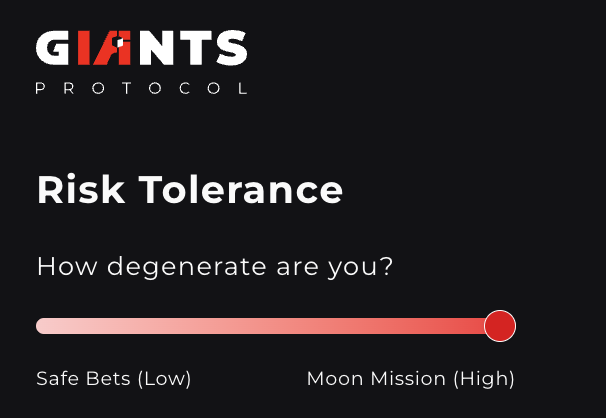Giants Protocol: The Yield Farming Revolution When DeFi Meets AI
In 2025, the fusion of DeFi and artificial intelligence gave rise to the emerging DeFAI (Decentralized Finance + Artificial Intelligence) track, with Giants Protocol (G) rapidly rising thanks to its core positioning as a “natural language-driven AI agent.” The project aims to simplify complex yield farming strategies into executable automated instructions via cross-chain intelligent agents, completely solving the dual pain points of fragmented liquidity management and high technical barriers. As of July 2025, its testnet users exceeded 100,000, with AI agents executing an average of 4,700 transactions daily, making it one of the fastest-growing DeFAI protocols within the Solana and Bitcoin ecosystems.

This Token Insights article dives into Giants Protocol’s technical architecture, tokenomics, and ecosystem, exploring how it uses AI agents to reduce DeFi participation thresholds and automate multi-chain yield strategies.
Project Positioning: Lowering Barriers and Integrating Cross-Chain
Core Pain Points
Traditional DeFi users face two major issues: operational complexity (e.g., liquidity mining requires expertise and constant monitoring) and fragmented liquidity (funds scattered across Ethereum, Solana, Bitcoin, etc.). Giants Protocol’s AI Agent Factory allows users to issue instructions in natural language (e.g., “20% APY low-risk strategy”), and the system automatically generates plans and executes multi-step operations without the need for coding or manual cross-chain actions.
Strategic Ecosystem Integration
This is particularly evident in the Bitcoin ecosystem breakthrough: natively supporting automated management of Runestone assets (e.g., BGPS), users can stake BRC-420 standard NFT “golden eggs” to mine G token airdrops. The project also received strategic investment from Singapore’s sovereign fund and is piloting tokenization of enterprise assets across Southeast Asia.
Technical Architecture: AI Agent Engine & Risk Control
A three-layer automation system forms a closed-loop operation:
-
Decision Layer: Integrates ML models to analyze on-chain/off-chain data in real time (e.g., market volatility, protocol vulnerabilities) to dynamically adjust strategies;
-
Execution Layer: Uses Wormhole, Axelar and other bridges to optimize asset transfers, reducing Gas fees by 50%;
-
Interaction Layer: Natural language processors parse user commands, enabling unified management of multi-chain wallets.
Key Technical Breakthroughs include:
-
Impermanent Loss Prediction Engine: Scans 200+ protocol APY data per second to auto-switch to higher-yield pools;
-
Bitcoin Deep Compatibility: Designed liquidity routers for Runestone assets, filling the automation tool gap in the BTC ecosystem.
Developers can reference similar frameworks in the JuCoin multi-chain development guide.
Tokenomics: Distribution and Utility of 88 Billion $G
Giants Protocol Controversy over Token Allocation
-
Circulation Concentration Risk: Initial circulation is only 176 million (2% of total); 33% of tokens (private + public sale) are fully unlocked on day one, risking heavy sell-offs;
-
Transparency Issues: Team + investors + foundation control 37.4%, while detailed rules for the 24% community fund remain undisclosed.
Core Utilities of $G cover three main scenarios:
-
Governance voting to determine supported chains and protocols;
-
Fee discounts: holders get 50% off AI service fees;
-
Ecosystem access: staking unlocks advanced tools (e.g., RWA asset allocation).
Market Launch Hiccups
Binance Alpha originally planned to open airdrop claims (88,000 Giants Protocol,$G) on July 11, 2025, but it was postponed due to unfinished tech audits, revealing early operational risks.
Competitive Landscape & Ecosystem Expansion
DeFAI Track Differentiation:
-
Operational Barrier Revolution: Giants Protocol supports natural language instructions (zero coding), while Fetch.ai requires Python to write Agents;
-
Bitcoin Ecosystem Integration: Natively supports Runestone protocol and Merlin Chain, forming technical barriers over Cosmos-based competitors;
-
Yield Source Breadth: Scans data from 200+ protocols in real-time, far exceeding competitor models relying on preset partnerships.
Key Ecosystem Partnerships Underway:
-
Agreements with Binance and OKX to list $G on major exchanges in Q3;
-
Collaborating with Southeast Asian real estate developers to pilot RWA applications in property cash flow AI management.
Challenges & Outlook: Regulatory and Technical Frontlines
Short-Term Risks
-
Regulatory Classification Debate: The U.S. SEC may classify AI agents as “unregistered investment advisors,” potentially restricting access by U.S. users;
-
Cross-Chain Security Dependency: Bridges like Wormhole may be attacked, triggering liquidation cascades.
Growth Catalysts Are Clear:
-
Mobile Strategy: Plans to launch a social strategy-sharing App (the “DeFi TikTok”) in Q3, lowering user barriers through strategy templates;
-
Runestone Ecosystem Support: With Runestone protocol assets reaching $2.3B, G demand will be underpinned by strong liquidity foundations.
Giants Protocol is a Financial Democratization Experiment
When AI transforms complex cross-chain yield strategies into a simple natural language instruction, and when technical barriers vanish while trust becomes the new moat, DeFi’s competitive paradigm shifts from capital size to user experience. If the RWA pilot succeeds, it could become the key gateway for traditional capital to enter on-chain yield markets.
The ultimate mission of technology is to make complexity simple, and privilege equal.





